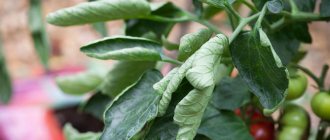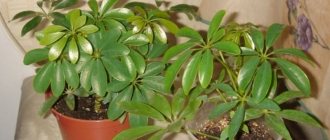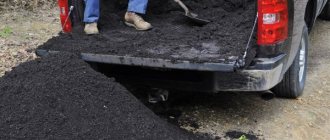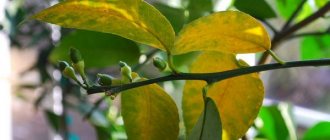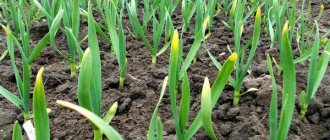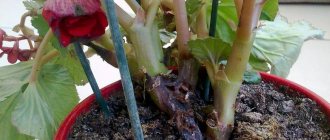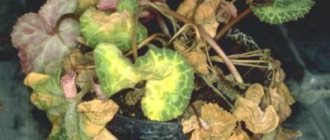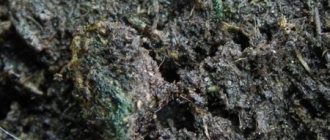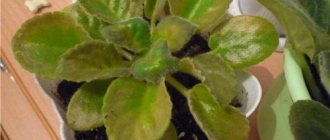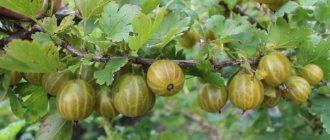Garlic is susceptible to diseases, like other garden plants. Diseases of garlic and the fight against them (you will see the photo below) will be described here. Despite the fact that this crop is an insecticide, various types of mold can cause fungal diseases of garlic, which will significantly spoil your harvest. Garlic diseases cause a lot of trouble for gardeners, but the result is worth it - this vegetable is very healthy. However, to be honest, it is profitable to grow it for sale.
Garlic adds piquancy, complements, and emphasizes the taste of meat or vegetable dishes. But in addition to its taste, it is also useful not only as a culinary product, but also benefits the garden. To protect the garden and vegetable garden, they use not only planting this vegetable, but also treating it with compounds of which it is the main ingredient.
Pests and pathogens do not like garlic phytoncides, which have a detrimental effect on them. Very often you can see beds of strawberries, sweet peppers, eggplants and other vegetables from the garden, planted together with garlic.
Most often, weak plants suffer from diseases, so before planting any variety of garlic, it is recommended to first fill the planting material with hot water (about 50°C) and let it sit for 10-15 minutes. After heat treatment, the garlic cloves can be sprinkled with crushed chalk, and a careful selection of all spoiled cloves can be made. In order not to provoke the appearance of pathogenic organisms, the time interval between sowing this crop in one place should be at least 3 years.
Photos of garlic diseases (manifestation of fusarium):
Rust on garlic - how to treat it?
This is a rather dangerous disease that affects crops of bulbous crops. Rust of garlic is manifested by the appearance of yellow lines, which become wider and wider, covering the entire leaf. Sometimes the symptoms have another visual manifestation - yellow round spots (which then turn red), slightly convex in shape.
This disease can cause significant damage to crops: plants lose leaves, the accumulation of organic matter is significantly reduced, the heads cannot fully develop and remain small. There is no need to talk about the taste and commercial qualities of such garlic, however, preventive treatment of the cloves before sowing helps reduce the likelihood of disease manifestation. The slices can be filled with a 40% formaldehyde solution (40 ml/120 l of water) - two hours of exposure will be enough. The beds themselves should be shed with a solution of Fitosporin-M (15 ml per 10 l). You can also use copper oxychloride (an inorganic fungicide) or Bordeaux mixture (1% solutions) for these purposes.
If the disease has already appeared, that is, the leaves are covered with rust, the crops can be treated with copper sulfate or the fungicide Hom. It is the same copper oxychloride. Especially good results are obtained by mixing the drug with finely grated tar soap. Irrigation of the stems is carried out at intervals of 10-14 days, but a month before harvesting the procedure should be stopped (copper salts are harmful to our body).
Rust on stems, photo:
For treatment, you can also use the same drugs that are used to combat another garlic disease - downy mildew. Alirin-B, a broad antifungal agent, gives good results in the fight against rust, especially in the initial stages, and increases plant resistance to disease (immunizing fungicide). The drug Gamair suppresses a wide range of fungi. Fungicides Kuproksat, Champion, Medyan Extra 350 SC, class. also recommended for use.
Downy mildew or downy mildew of garlic
With this garlic disease, the reaction begins with yellowing of the upper part of the stem, after which it dries out. The plant's growth slows down, it weakens, the stems turn pale, then turn yellow and become deformed. Downy mildew can become a real epidemic, affecting extensive crops of this crop. Regions where a humid climate prevails are especially susceptible to this disease.
However, the peronosporosis fungus is very sensitive to bright light and elevated temperatures, and in the heat it simply dies. It turns out that in clear, warm weather it is practically not activated, but in rainy weather, on the contrary, it develops very successfully. These features of the fungus (Peronospora destructor) are used in the prevention and control of fungal diseases.
Downy mildew of garlic, photo:
Studies have shown that the occurrence of the disease occurs from contaminated seed material, as well as from organic elements remaining in the soil after planting and harvesting. It is noteworthy that infection of healthy plants can occur with the help of fungal spores carried by the wind over considerable distances.
To prevent the disease at the very beginning, before sowing, it is recommended to warm the heads in bright sun for a day or two, at a temperature of +40°C. The harvested crop should be treated in the same way. You can fight this scourge using complex fungicides such as Tiram (according to instructions), Fentiuram (3 kg/10 l of water), Polycarbocin (40 g/10 l of water), Arcerida (30 g/10 l of water). The same solution of Thiram (2-3%) can be used to treat the cloves before sowing, keeping them in suspension for about 20-25 minutes. You can also treat young plants with a 1% solution of Bordeaux mixture; the fungicide Polychom is suitable for treating shoots.
Stomp
The German drug Stomp contains pendimethalin. Its concentration is 330 g per 1 liter. The drug is used to control annual weeds at the seedling stage in winter garlic plantings. You can use the herbicide:
- immediately after the autumn planting of garlic cloves;
- in early spring before weeds emerge.
The consumption of the drug is from 3 liters to 5 liters of solution for each hectare of crop plantings. The beds are treated by spraying.
Recommendations
- Before spraying, be sure to water the soil well;
- if the garlic was planted at a depth of less than 5 cm, do not use such a herbicide;
- the drug continues to act in the ground for 3-4 months;
- Stomp is used at temperatures from 5 °C to 25 °C in calm weather; the optimal time for processing plantings is early morning;
- The rate of herbicide consumption depends on the composition of the soil and the types of weeds growing on the site.
Oxyfluorfen, which is contained in the herbicide for garlic Goal from the Swiss manufacturer Syngenta, has proven itself in the fight against annual weeds.
The drug is used in the spring on garlic beds, when the seedlings of the crop have reached a height of 10 cm. The consumption rate of the drug is from 50 ml to 300 ml per 1 hectare of land. The greatest effect is noticeable on weeds that have grown up to 7 cm.
Recommendations
- at temperatures above 23 °C the preparation cannot be used for spraying beds;
- the herbicide is used in stable sunny weather (at least 2-3 days);
- Garlic beds damaged by sudden frosts cannot be processed.
The chemical composition does not last long in the soil. Swiss Goal can be replaced with Israeli Galigan. The spectrum of action of the drugs is the same.
Garlic bacteriosis or bacterial rot
There are much fewer varieties of bacterial diseases of this plant than fungal ones. However, a disease such as bacterial rot causes significant damage to the yield and presentation of garlic heads. Garlic bacteriosis affects plants during the growing season, as well as during storage of already collected stocks. Perennial forms of pathogens attack the plant exclusively during the growing season, and cloves infected with bacteria rot during growth and do not sprout. On tubers, the disease manifests itself in the form of yellowish-brown wounds on the surface of the clove, which subsequently invade the entire garlic clove. Another manifestation of the disease is expressed in the transparency of the cloves, which then turns into mucus with a strong unpleasant odor.
The germs of bacteria live in organic crop residues. They penetrate into the seed through microtraumas, and pests such as nematodes, onion flies, and tobacco thrips only aggravate the situation by being carriers of bacteria. Additionally, the plant’s immunity is weakened by factors such as poor soil and burns acquired during the growing season. Garlic is also at risk of becoming infected with bacteriosis if it has not fully ripened, has not been sufficiently dried after harvesting, or has been stored in a damp room (as well as in high temperature conditions).
Bacterial rot of garlic, photo:
Preventive measures to combat this disease include maintaining a time interval between sowing in one place (minimum 4 years). Treating the soil with Hom also gives good results. It is not recommended to plant garlic next to late-season vegetables; do not rush into harvesting - allow the heads to fully ripen. It will be good if you pre-fertilize the soil with phosphorus fertilizers. Crop residues should be carefully removed, and the land itself should be deeply plowed. Do not remove the tops prematurely; let them dry for about 10 days at a temperature of 23-30 °C.
The use of insecticides to stop the activity of insects is an excellent preventive factor; also do not forget to treat the seed with a formaldehyde solution, as indicated above. Observe the storage conditions for tubers: humidity should not exceed 70%, temperature can vary from +1 to +4°C for winter varieties or +16..18°C (with a humidity of 60-70%) for spring varieties.
Prevention rules
One of the main rules is compliance with crop rotation.
- In the fall, you need to carefully clean the beds from last year's plant debris.
- Planting material must be of good quality.
- Before planting, the cloves must be etched in a solution of potassium permanganate or in a saline solution.
- Since rot tends to accumulate in the soil, garlic can be planted in the same bed after 3-4 years.
- Plantings need to be regularly thinned and weeds removed.
To successfully grow garlic varieties, it is also important to know about fertilizing, processing, propagation by seeds and the peculiarities of growing garlic as a business.
Garlic fusarium - control measures
It is sometimes called a disease of hot climates, since fusarium is most active in the south, where it is very hot in summer or not very cold in winter. Crop losses due to damage by fusarium can reach impressive proportions - up to 70-80%. Central Russian regions, especially in hot summers, are also sometimes a risk zone. Fusarium rot of garlic, in other words, bottom rot, affects the seed in the ground. Remains of past harvests and irrigation water may contain fusarium spores. For sowing, whole cloves should be carefully selected without damage, since the presence of any microtrauma is a direct entry point for the fungus.
The disease affects the plant during the growing season, temperature +15..30°C. High humidity levels favor this. Garlic fusarium appears even in the beds, when the stems begin to rapidly turn yellow or dry out, starting from the tips. Sometimes the stems are covered with brown streaks, and a pinkish coating collects in the leaf axils. Damage to the heads and lobules begins with the softening and appearance of fusarium mycelium in infected areas (its color can be white, yellow or pinkish).
The roots of the plant begin to rot and die, and the garlic, of course, dies. As for the already harvested crop, bottom rot becomes more active in warm rooms with high humidity. In this case, infection occurs quite quickly - the mycelium appears between the teeth, gains strength, and mummifies the heads.
Fusarium of garlic, photo:
Measures to prevent and control this disease are not particularly different from other methods used for other fungal diseases. Careful control of seed material, treatment with preparations such as Hom, Fitosporin or Maxim, soil disinfection with fungicides and removal of last year's organic residues - all together provide a sustainable preventive effect. The drug Quadris gives very good results; it is also used to treat rust. To prevent your garden from being affected by garlic root rot, control measures must be taken from all sides: monitoring the soil, treating the seed tines, observing the time interval between planting in the same place, maintaining the timing of sowing and harvesting. Well-dried tubers should be stored in proper temperature conditions.
Treatment for diseases
Every land owner should know about garlic diseases and measures to combat them. Another very unpleasant and quite common ailment is bacteriosis. The first signs of this disease appear during plant storage. Sores or stripes form on the surface of the cloves, extending upward from the bottom. Over time, the clove becomes yellow. As a rule, this disease occurs when garlic is stored improperly. This plant can become infected with bacteriosis if an unripe or poorly dried head is located next to it. The main measure to combat bacteriosis is the use of cloves exclusively from dry and healthy heads. Before you start planting garlic, it should be treated with a solution of copper sulfate.
Another very unpleasant and dangerous disease for garlic is fusarium. This fungus usually appears during the growing season of the plant. If it is not dealt with in a timely manner, the bulb itself softens and the garlic completely dies. This disease very often develops at elevated air temperatures or excessive humidity. The danger of this fungal disease is that after death, the garlic bulbs become mummified and are transmitted to other plants. In order to rid the soil of this disease, a person should treat it using the effective “HOM” product.
Neck rot is considered another of the most common diseases of garlic. It occurs during storage of the heads, although the infection itself occurs before harvesting the fruit during the period of lodging of the leaves. This disease appears in case of excessive soil moisture and during cool weather. Another reason for the appearance of neck rot is an excessive amount of nitrogen fertilizers. The first signs of this disease are softening of the bulb tissue in the cervical area. Over time, gray spots form on the scales. In order to prevent the appearance of neck rot, the owner of the land plot needs to apply nitrogen fertilizers only at the beginning of garlic growth. In addition, it should be collected only in dry weather. Before planting the plant, the soil and planting material itself must be disinfected with preparations containing copper.
When garlic is stored at too high an air temperature, the risk of developing a disease such as black mold significantly increases. This fungal disease causes mummification of infected bulbs. Prevention of this type of garlic disease involves constant inspection of the bulbs. If they become infected, they should be thrown away to prevent the spread of fungal spores.
Neck rot of garlic
Often this disease does not come alone, but together with fusarium, bacteriosis, black and green mold. It even happens that an onion crop is simultaneously attacked by fungi and bacteria. There is nothing to guess here - the weakened immunity of the plant simply cannot cope. The complex of prevention and treatment should be aimed at suppressing all of the above-mentioned diseases.
Gray neck rot of garlic causes significant damage to the crop, which has already been harvested, stored, and also affects the heads during transportation. Unripe, under-dried tubers are the first to get sick. The fungus begins to attack crops during the ripening of the bulbs; the source of infection is the remains of past harvests that were not harvested in time. Gray rot penetrates into garlic tubers through external damage and is activated at the top of the neck. Disease spores are carried by the wind and settle on the stems. The most dangerous thing is that at first the disease is difficult to identify, since the visible symptoms are not very noticeable to the eye. Thus, the affected heads are sent to storage along with healthy ones, subsequently infecting all stocks.
Neck rot of garlic (left), black mold rot (right), photo:
Gray rot appears at the bottom of the stems as small whitish spots with greenish borders. At this point the stem breaks, turns yellow, and dries out. Gray spots appear on the head, which over time cover all the cloves. The softening of the teeth begins at the top, the lobules acquire a watery consistency and a sharp, unpleasant odor. At this stage, gray mold confidently captures the entire top of the tuber.
A thorough analysis of the harvested crop should be carried out, the affected heads should be removed, preferably burned. After which the storage area must be reliably disinfected with formaldehyde or sulfur dioxide.
This fungus feels good at a temperature of +20°C, and can actively develop at +3..+5°C. Based on this, for the harvested crop during storage it is necessary to provide an appropriate level of humidity (70%) and a temperature range of 0–2°C. Stocks should be periodically checked for affected tubers; the heads themselves can be sprinkled with crushed chalk. The better the garlic is dried, the lower the risk of infection with gray neck rot. As recommended above, it is advisable to pre-treat the land for sowing with copper chlorhexide (the drug Hom) or copper sulfate.
The cloves for sowing can be pre-disinfected with Thiram suspension (according to the instructions), and already grown heads with Fundazol. After processing (15-20 minutes), the tubers should be thoroughly dried and then stored. We observe the time intervals between sowings, as mentioned above, we cut off the stems from the ripened heads after they have completely dried, not very briefly.
It is also worth mentioning the soil type. Garlic grown on loam is more susceptible to gray rot; sandy loam soil is much preferable in this case.
Fungal diseases
The greatest danger to plant life is fungal diseases. Due to the structural characteristics of the body, they are able to survive low temperatures in winter and actively begin to grow as soon as warm weather sets in. The most common reasons for the appearance of fungus on plants are violations of growing conditions, excess humidity, dominance of weeds in the beds and failure to comply with crop rotation.
Green mold of garlic
Pathogen: Penicillium glaucum Link.
The active phase of disease development is observed during garlic storage. The lower part of the bulb (bottom) is covered with small brown spots with a watery structure. If you disassemble the onion into individual cloves and peel them, you will notice depressed light yellow spots on their surface. As the disease progresses, the cloves become sluggish, soften and become covered with a light coating, which subsequently turns green. The fungal spores are spherical, microscopic, and when the shell is destroyed, they actively spread inside the bulb. At the last stage of development of the disease, the bulb becomes empty from the inside.
Black mold of garlic
Pathogen: Aspergillus niger Tiegh.
Like green mold of garlic, the disease develops when the storage conditions of the crop are violated. When the room temperature rises to 18-20 °C, fungal spores enter a state of “vigor”, affecting the stored bulbs. Infection begins from the upper layers of the husk, gradually penetrating deep into the garlic, filling the space between the layers of husk with black mold. As the disease progresses, the onion becomes soft, and the husk is completely covered with a light black mass - fungal spores. The danger is that the spores quickly spread to neighboring bulbs, infecting them in a short time.
White rot
Pathogen: Sclerotium cepivorum Berk.
It is not possible to accurately determine the time of onset of the disease. It can appear at any stage of garlic development or storage. When infected during the growing season, the leaves begin to turn yellow, starting from the top ones, and gradually they die off. The husks and roots of the plant are covered with a white coating - this is mycelium. A pathological transformation of the cloves occurs - they become watery and quickly begin to rot. The fungus develops at low air temperatures - about 10-20 ° C. Sclerotium cepivorum Berk overwinters in the soil and also on affected bulbs.
Bottom Rot
Pathogen: imperfect fungi of the genus Fusarium.
The spread of the disease occurs through contaminated soil and untreated planting material. The disease develops quickly: first the leaves turn yellow, which subsequently die, then the root system of the garlic begins to rot, and a yellowish-pink coating appears on the bulbs. If you examine an infected onion, you can find mold pads; between the layers of the husk there are also fungal spores. If left untreated, the plant mummifies and dies. The factor stimulating development is an increase in air temperature.
Black moldy rot of garlic
If the storage area for vegetables is hot and stuffy, then black rot (aspergillosis) will not take long to appear. With poor ventilation, black dusty spores appear between the lobules, and the teeth themselves lose their hardness. The risk category includes poorly ripened, poorly dried tubers; dampness is an ideal environment for this fungus. The pathogenic fungus lives in unharvested remains of the previous harvest, as well as on damaged vegetables or fruits. If, in warm weather, garlic stalks remain wet for more than 6 hours, the risk of fungal activation increases significantly.
Black mold on garlic, like other fungi, does not like Bordeaux mixture; about 3 weeks before harvest, irrigate the garlic beds with a 1% mixture. In general, to prevent or combat this disease, you need to use the same drugs that are recommended to eliminate the effects of bacterial rot. The remaining measures are similar - control of the bulbs after harvesting, high-quality drying, appropriate storage temperature. Seed cloves, seedling stems, and ripe tubers should be protected from damage.
Flusilade Forte
Herbicide against wild weeds in garlic beds from Syngenta Fusilad Forte is used at a rate of 1 liter of solution per 1 hectare of land. The same drug can also be used in the fight against perennial weeds. In this case, the consumption of herbicide for garlic will be 2 liters for each hectare of plantings.
Begin to spray the plants with 2 true leaves at a time and continue until bushes form. Between sprayings, 7 to 10 days should pass.
Garlic herbicide Fusilade is effective against wheatgrass. Spraying the plant is carried out in 2 steps:
- Wheatgrass in the phase of 3-4 leaves is treated with Fusilade solution at the rate of 1 liter per 1 hectare of land.
- After 2 weeks, the weed is treated with a herbicide at the rate of 1.25 liters per 1 hectare of garlic beds.
After such treatment, no mechanical treatment of the beds is carried out for a month. The use of other herbicides in this area is possible only after 7-10 days.
Using a Swiss herbicide for garlic will pay off if the thermometer does not rise above 27°C. Vegetable growers recommend not using the drug in dry weather: wheatgrass is more resistant to herbicides in such conditions. Garlic treated with herbicide is used for food no earlier than 30 days after treatment.
